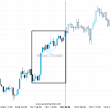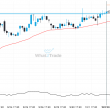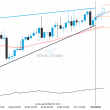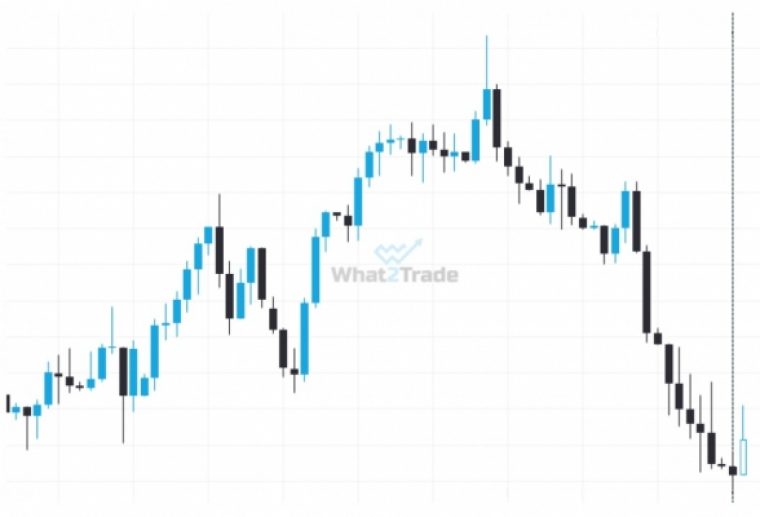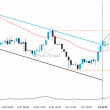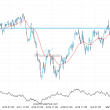A Martingale forex strategy offers a risky way for traders to bet that long-term statistics will revert to their means. Forex traders use Martingale cost-averaging strategies to average down in losing trades. These strategies are risky and there are no long-run benefits.
But with no long-term benefits, why do traders make use of this system? Well, despite its downfalls, there are a number of other benefits.
First, under ideal conditions and including positive carry, Martingale strategies offer what appears to be a predictable profit outcome and a “sure bet” on eventual wins.
Second, Martingale forex strategies don’t rely on any predictive ability. The gains from these strategies are based on mathematical probabilities over time, instead of relying on skillful forex traders using their own underlying knowledge and experience in particular markets. Novice traders like Martingale strategies because they can work even when the trader’s “trade-picking” skills are no better than pure chance.
Third, currency pairs tend to trade in ranges over fairly long periods of time, so the same price levels are often revisited many times. As with “grid trading,” there are usually multiple entry and exit possibilities in the trading range.
It’s important to understand from the beginning that a Martingale forex strategy doesn’t improve the chances of winning a given trade, and its major benefit is that it delays losses. The hope is that losing trades can be held until they become profitable again.
Martingale strategies are based on cost-averaging. The strategy means doubling the trade size after every loser until a single winning trade occurs. At that point, because of the mathematical power of doubling, the trader hopes to exit the position with a profit.
And by “doubling” the exposure on losing trades, the average entry price is lowered across all entry points.
A Win-Lose Example
The below table shows how a Martingale strategy works with a simple trading game, in which each round has a 50% chance of winning and a 50% chance of losing.
Stake Outcome Profit/Loss Current Balance
$100 Won $100 $100
$100 Won $100 $200
$100 Lost -$100 $100
$200 Lost -$200 -$100
$400 Lost -$400 -$500
$800 Won $800 $300
In this simple example, the forex trader takes a position size worth a standard $100 in account equity. With each winning trade in that same currency pair, the subsequent position size is kept at the same $100.
If the trade is a loser, the trade size is doubled for each successive loser. This is referred to as “doubling down.” If the forex trader is lucky, within a few trades he or she will enjoy a winner.
When the Martingale forex strategy wins, it wins enough to recover all previous losses including the original trade amount, plus additional gains.
In fact, a winning trade always results in a net profit. This occurs because:
2n = ∑ 2n-1 +1
Where n is the number of trades. So, the drawdown from any number of consecutive losses is recovered by the next successful trade, assuming the trader is capitalized well enough to continue doubling each trade until achieving a winner.
The main risk of Martingale strategies is the possibility that the trading account may run out of money through drawdown before a winning trade occurs.
A Basic Forex Example
There usually isn’t a rigid binary outcome in real forex trading – A trade can close with a variable amount of profit or loss. Still, the Martingale strategy remains the same. The trader simply defines a certain number of pips as the profit target, and a certain number of pips as the stop-loss threshold.
The following recent EUR/USD example shows averaging-down in a falling market, with profit target and stop-loss levels set at 20 pips.
Rate Order Lots Entry Average Entry Absolute drop Break Even Balance
1.3500 Buy 1 1.3500 1.3500 0.0 0.00 $0
1.3480 Buy 2 1.3480 1.3490 -20.0 10.00 -$2
1.3460 Buy 4 1.3460 1.3475 -40.0 15.00 -$6
1.3440 Buy 8 1.3440 1.3458 -60.0 17.50 -$14
1.3420 Buy 16 1.3420 1.3439 -80.0 18.75 -$30
1.3439 Sell 16 1.3439 1.3439 -61.2 0.00 $0
First, the trader buys one lot at a price of 1.3500. The price then moves against the trader, down to 1.3480 which triggers the stop loss.
The trading system accounts 1.3480 as a “theoretical” stop loss, yet it doesn’t liquidate the position. Instead, the system opens a new trade for twice the size of the existing position.
So, the second line of the table above shows one more lot added to the position. This allows an average entry price of 1.3490 for the two lots.
It’s important to note that the unrealized loss is the same, yet now the trader needs a retracement of only 10 pips in order to break even, not the 20 pips envisioned by a loss following the first trade.
“Averaging down” by doubling the trade size reduces the relative amount needed to recover the unrealized losses. By averaging down with even more trades, the break-even value approaches a constant level which comes ever closer to the designated stop-loss level.
Continuing the above example, at the fifth trade the average entry price is 1.3439 so when the price moves upward through that point, the overall averaged holdings reach the break-even level.
In this example, the first four trades were losses, but the profit on the fifth trade covered all. A mechanical forex trading system can close out this group of trades at or above the break-even level. Or, the system can hold the currency pair for greater gains.
When a Martingale strategy works successfully, the trader can recover all losses with a single winner. Still, there is always a major risk that the trader may suffer an unrecoverable drawdown while awaiting a winner.
Limitations and Warnings
A Martingale forex trading strategy should work from a mathematical and theoretical viewpoint because no long-term sequence of trades will ever lose.
Still, the perfect Martingale strategy would require unlimited capitalization in the real world, since the trader may face a very long string of losses before achieving a single winner. Few traders could withstand the required drawdown.
If there are too many consecutive losing trades, the trade sequence must be closed at a loss before starting the cycle again. Only by keeping the initial position size very small in proportion to the account equity could the trader have any chance for survival.
Ironically, the higher the total drawdown limit, the lower the probability of losing in a trade sequence, yet the bigger that loss will be if or when it occurs. This phenomenon is called a “Taleb distribution.” The more trades, the more likely that a long string of losses will arise.
This issue occurs because risk exposure increases exponentially during a sequence of losing trades with a Martingale system. In a sequence of n losing trades, the trader’s exposure increases as 2n-1.
So, if the trader is forced to exit a trade sequence prematurely, the losses are very large. On the other hand, the profit from a Martingale forex trade only increases in a linear way. It is proportional to half of the average profit per trade, multiplied by the number of trades.
Regardless of the underlying trading rules used to choose currency pairs and entry points, if the trader is only right 50% of the time (the same as random chance) then the total expected gains from winning trades would be:
Profit ≈ (½ n) x G
When n is the total number of trades and G is the amount of profit on each trade.
However, a single big losing trade will reset this amount to zero. Continuing the example above, if the trader sets a limit of 10 double-down trades, the biggest trade lot size would be 1024. The maximum amount would only be lost if there were 11 losing trades in a row.
According to the above equation, the probability of this occurrence is (½)11. In other words, the trader would expect to lose the maximum amount once every 2048 trades.
After 2048 forex trades:
- Expected gains are (½) x 211 x 1 = 1024
- Expected worst single loss is -1024
- Expected net profit is 0
Assuming the trader’s trade-choosing strategy is no better than simple chance, the Martingale system always offers at least a 50-50 chance of success.
Again, Martingale doesn’t improve the chances of winning a trade, it simply postpones losses or helps the trader potentially avoid losses by staying in the positions long enough. It is risky, and very few traders have been successful with Martingale strategies in the long run.
Trading Range Problem
Some trend-following traders use a “reverse Martingale” strategy that involves doubling winning trades, and cutting losses quickly. However, Martingale strategies tend to suffer during trending markets. The only opportunities come from range-trading instead of trend-following.
The challenge is to choose currency pairs with positive carry which are range-bound instead of trending. And, the trading system should be programmed to unwind positions when steep corrections occur.
Potentially Enhance your Yield
One occasional use of Martingale forex strategies is to enhance yield. Some traders use Martingale strategies with positive-carry forex trades of currency pairs with large interest-rate differentials. That way, positive credits accumulate during the open trades.
By limiting drawdown to 5% of the account equity, some traders achieve 0.5 to 0.7% monthly return by using Martingale strategies when EUR/CHF and EUR/GBP are trading in tight ranges over fairly long periods of time.
The trader must keep a watchful eye for the risks that can result when forex prices break out into new trends, especially around support and resistance levels. Again, Martingale only works with range-bound currency pairs, not trending ones.
Calculating the Drawdown Limit
For traders willing to risk a Martingale forex strategy, the position size and risk are first to decide. To keep this example simple, let’s use powers of 2.
The number of lots traded will determine the number of double-down trade legs that can be placed. For example, if the maximum is 256 lots, this allows 8 double-down legs.
Maximum lots that can be traded = 2number of legs
If the final trade in a sequence is closed when its stop-loss point is reached, then the maximum drawdown will be:
Drawdown < Maximum number of lots x (2 x stop-loss) x lot size
So, with 256 micro lots, and a stop-loss set at 40 pips, the maximum drawdown would be $2048.
To determine the average number of trades that the system can sustain before a loss, use the calculation:
2number of legs + 1
In the current example, that number is 29, or a total of 512 trades. After those 512, the trader would expect to suffer 9 consecutive losing trades.
With a Martingale forex strategy the only survivable way to manage drawdowns is to use a “ratchet” system: As profits are earned, the size of the trading lots and drawdown limits are both increased incrementally.
Trade sequence Equity realized Drawdown allowed Profit
1 $1,000 $1,000 $25
2 $1,025 $1,025 $5
3 $1,030 $1,030 -$10
4 $1,020 $1,020 $5
5 $1,025 $1,025 $20
This ratcheting adjustment should be handled automatically by the mechanical trading system, once the trader sets the drawdown limit as a percentage of the equity realized.
Where to place your Entry
For entry signals in a Martingale forex strategy, traders sometimes “fade” or trade the false break-outs from the range. For example, when the currency pair’s price moves a certain number of pips above the 15-day moving average (MA), the system places a sell order.
When using this method, it’s important to act only on signals that indicate a high probability that the price will retrace back into the original range instead of breaking out.
Setting your Profit Targets and Stop-Losses
It’s also important to set the profit targets and stop-loss points appropriately. On the one hand, if the values used are too small the system will open too many trades. On the other hand, if the values are too large then the system may not be able to sustain enough successive losses to survive.
With Martingale strategies, only the last stop-loss point is actually traded. All the previous stop-loss levels are “theoretical” points since the trades aren’t actually liquidated there, and in fact a new trade with double position size is added at each of those points.
Martingale trades must be consistently treated as a set, not individually. Forex trades using a Martingale strategy should only be closed out when the overall sequence of trades is profitable, that is, when there is a net profit on the open trades.
The Martingale trader hopes that a winning trade will be achieved before the drawdown from successive doubled losses drains the trading account.
The choice of profit targets and stop-loss points also depends on the trading time frame and the market’s volatility. In general, lower volatility means the system can use a small stop-loss value.
Some traders set a profit target of between 10 to 50 pips and a stop-loss value between 20 to 70. There are several reasons for this.
A small profit target is more likely to be achieved sooner, so the trade can be closed while profitable. And, since the profits are compounded due to the exponential increase in position size, a small profit-target value may still be effective.
Using a small profit target doesn’t change the risk-reward ratio. Even though gains are small, the nearer threshold for gaining improves the overall ratio of winning to losing trades.
Both Sides of the Coin
A Martingale forex trading strategy offers very limited benefits, such as trading rules that are easy to define and program into an Expert Advisor or other mechanical trading systems. And the outcomes regarding profits and drawdowns appear statistically predictable. As well, Martingale strategies don’t rely on a trader’s ability to predict market direction or choose winning trades.
However, Martingale forex strategies are invariably losers in the long run. They simply postpone or avoid losses instead of creating standalone profits.
And, unless the losses are managed carefully by adjusting the position sizes and drawdown limits when profits are earned, a Martingale strategy may run out of money during a particularly harsh drawdown. This can happen because exposure to risk increases exponentially, yet the profits only increase linearly.
In summary, Martingale forex strategies may be helpful when used during limited periods in trading ranges by experienced traders who focus on positive-carry currency pairs. Yet, the risks are overwhelmingly negative.
Have you ever tried a Martingale “double down” strategy in your own forex trading?

